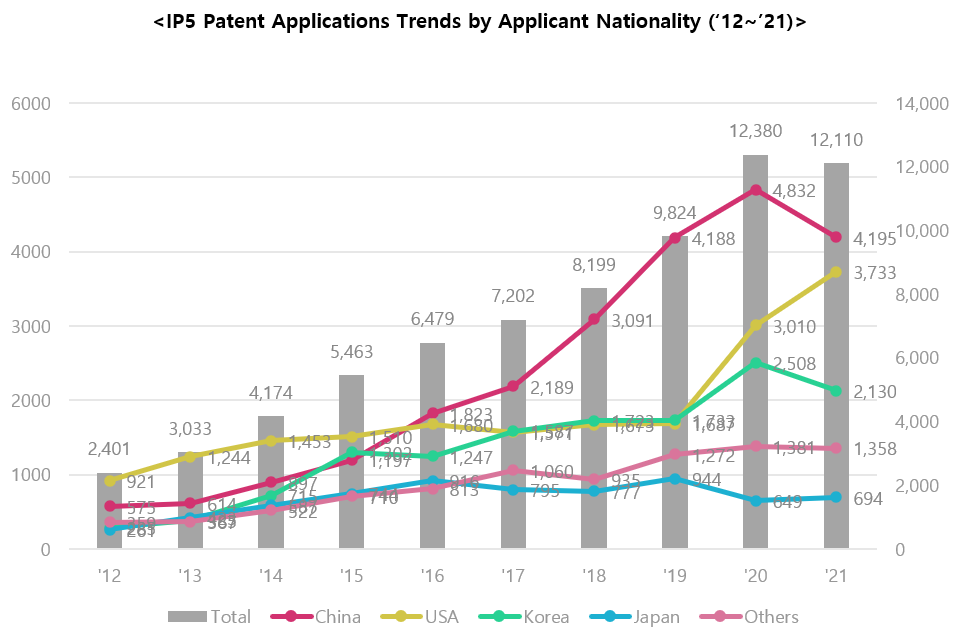According to a survey by IRS Global, an industrial information research organization, approximately 17 billion IoT devices were in use worldwide as of 2022. This number is expected to grow to 22 billion by 2025, with an estimated market size of $554.8 billion. Accordingly, interest in IoT standard patents based on 3GPP, which are essential for loT implementation is also increasing.
According to data from the Korean Intellectual Property Office (KIPO), the number of 3GPP-based IoT standard patent applications filed with IP5 patent offices increased nearly five times from 2,401 cases in 2012 to 12,110 cases in 2021. Notably, Korea had the highest average annual growth rate among major counties, at 25%.
Between 2012 and 2021, China accounted for the largest share of application filings was with 33.1% (23,601 cases), followed by the United States at 25.9% (18,482 cases), Korea at 19.1% (13,615 cases), and Japan at 9.5% (6,790 cases). Together, these countries represented a total of 71,265 applications.
Among the major applicants, Qualcomm filed the highest number of patent applications, followed by Samsung Electronics, Huawei, LG Electronics, and Ericsson.
Regarding the application filing status by specific technology, the largest number of patent applications were filed in the field of ‘Narrowband Internet of Things (NB-IoT),’ which relates to low-power, long-distance wireless communication, with 45,552 cases (63.9%). This was followed by the ‘Sidelink’ technology, which enables direct machine-to-machine communication without a repeater, with 15,189 cases (21.3%), and ‘Machine Type Communication (MTC),’ a technology that allows device-to-device communication without human intervention with 10,524 cases (14.8%).
Considering the trends in IoT-related mobile communication standard patent applications, it is clear that securing innovation and rights in the areas of NB-IoT, Sidelink, and MTC technologies will play a crucial role in determining competitiveness in the future IoT market. Therefore, it would be highly advantageous for companies to reevaluate their patent strategies in these core technology areas.



